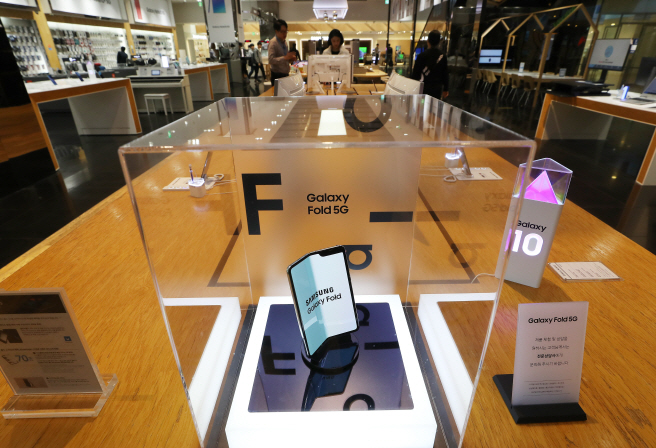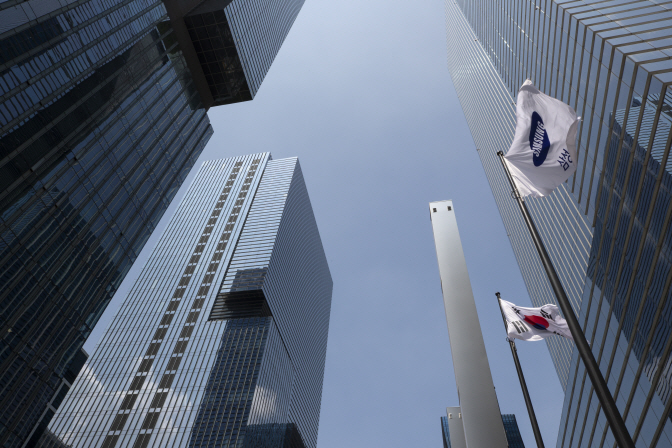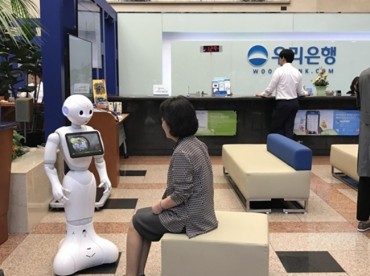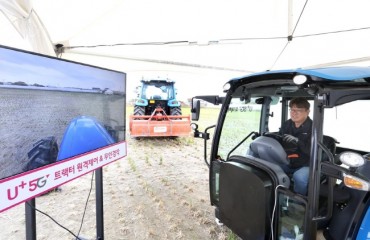SEOUL, Oct. 31 (Korea Bizwire) — Samsung Electronics Co. said Thursday its net profit more than halved in the third quarter from a year earlier due to weak memory chip prices, but it projects upbeat prospects for the chip market next year.
The net profit of the world’s largest memory chip and smartphone maker tumbled 52.3 percent to 6.3 trillion won (US$5.4 billion) in the July-September period, the company said in a regulatory briefing.
Its operating profit plunged 55.7 percent on-year to 7.8 trillion won, and sales slipped 5.3 percent to 62 trillion won in the three-month period, the firm said.
The company logged a quarterly record high in operating profit during the third quarter of last year. It marks the fourth consecutive quarter that the tech giant has reported an on-year drop in operating profit.
The operating income for the third quarter was above market expectations of 7.1 trillion won, based on the survey conducted by Yonhap Infomax, the financial arm of Yonhap News Agency on 21 Korean brokerage houses.
The sales estimate stood at 61.3 trillion won on average.
Samsung said its money-spinning semiconductor business, which accounts for more than two-thirds of the firm’s sales, continued to slump to weigh on the overall profitability amid an industry-wide slump since the end of 2018.
“Third-quarter profit fell sharply from a year earlier but improved from the previous quarter, as stronger smartphone sales and improved utilization in mobile OLED screens were weighed down by continued weakness in the memory chip market,” Samsung said in a release.
Samsung said chip demand was higher than expected in the July-September period as data centers increased purchases on concerns over the supply chain after Japan in July imposed export restrictions for high-tech materials on South Korea.
“Chip demand for all applications increased in the third quarter, driven by launches of mobile devices and data centers’ restocking,” Chun Se-won, senior vice president of semiconductor business, said during a conference call.
“Still, the demand beat our expectation as data centers increased (chip) purchases in the wake of uncertainties surrounding the trade issues.”
The tech giant said prices of NAND flash chips, mostly used in mobile devices, have already stabilized in the third quarter, while anticipating the inventory DRAM for PCs and servers will go back to normal levels in the first half of 2020 on increased purchases from data centers and expansion of 5G smartphones.
“As Samsung plans to manage investment and capacity operation flexibly depending on market conditions, DRAM inventory is expected to normalize in the first half of 2020,” Samsung said.
“However, uncertainties linger over the memory chip market as demand is seen recovering but risks from global industry circumstances persist.”
In the mobile business, strong sales of the Galaxy Note 10 and cheaper Galaxy A series boosted overall profit, along with improved margins for mass-market models. Its network business also contributed to sales growth on growing demand for 5G equipment by local carriers, it noted.
“Looking ahead to the fourth quarter, the company expects demand for components to turn sluggish in general amid weak seasonal effects, while marketing expenses are likely to increase to address year-end smartphone sales,” Samsung said.

Customers look at electronics products displayed at Samsung Electronics Co.’s exhibition center in southern Seoul on Oct. 30, 2019. (Yonhap)
The company earlier announced that it has sold over 1 million Galaxy Note 10s in South Korea, making it the fastest Samsung smartphone to reach the milestone.
The Note 10 was released only in a 5G model in the domestic market in August.
The panel business posted robust performance, with strong demand for high-margin OLED screens for smartphones offsetting losses from the large panel LCD business amid global supply glut.
The consumer electronics division posted a year-over-year decline in profit from the TV business despite growing shipments of premium models in the face of toughening price competition.
The firm expected fourth-quarter earnings in the mobile business to decrease from the previous quarter in the offseason, pinning hopes for a sales boost on 5G smartphones and foldable devices next year.
During this week’s annual developer conference in San Jose, Samsung teased a clamshell-like foldable concept phone, raising speculation of a new foldable series next year following the Galaxy Fold, which was released in September.
“Galaxy Fold was positively viewed by both press and customers, with its initial shipments being sold out,” Lee Jong-min, vice president of mobile communications business, said.
“We will leverage the success from commercialization of Galaxy Fold to expand the foldable lineup and maintain the market leadership.”
Samsung shipped 78.2 million smartphones for a 21 percent global market share in the July-September period.
In comparison, U.S. tech giant Apple’s iPhone shipments stood at 46.9 million units, giving a 12.4 percent share, over the period, according to market researcher Strategy Analytics.
The company said it will also speed up the shift from its LCD business to quantum-dot displays to improve profitability and expand presence in the premium market.
Earlier this month, Samsung Display, its panel-making unit, announced plans to spend 13.1 trillion won on the next-generation displays to respond to rising price pressure from fast-moving Chinese rivals.
Looking ahead to 2020, Samsung said there are “positive signs” on the chip demand outlook but that it will flexibly respond to changing market conditions amid lingering uncertainties surrounding the trade tensions between the U.S. and China and South Korea’s trade spat with Japan.
“However, demand for 2020 should be viewed with caution as uncertainties remain in the macroeconomic environment,” Samsung said.
“The company plans to focus more on flexible investment and capacity operation depending on market conditions.”
Samsung said it invested 6.1 trillion won in facilities in the July-September period, which raised the accumulated capital expenditure so far to 16.8 trillion won.
The company spent 14 trillion won in the semiconductor division and 1.3 trillion won in display equipment.
Shares in Samsung Electronics rose in early trade but closed unchanged at 50,400 won on the Seoul bourse Thursday, underperforming the KOSPI’s 0.15 percent rise. The earnings report was announced before the market opened.
(Yonhap)







